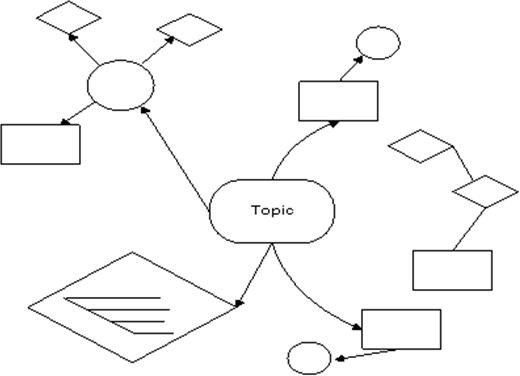
10 minute read
Research based Writing Instruction
from PROGRESS Winter 2011
by VALRC
by the staff of the TEAL (Teaching Excellence in Adult Literacy) Center / reprinted by permission
Recent national research has gathered Elements of Writing what we know about effective practices for teaching writing to adolescents. Writing is multifaceted and includes a number This fact sheet examines the research on writing instruction for youth and adults, with attention to those who struggle to learn. Extrapolating from these major analyses provides guidance for adult educators to of skills that must work together. Evaluating writing can be subjective when instructors and learners alike are unsure of what makes “good” writing. Writing “quality” is defined in Writing Next as “coherently organized essays containing well developed and pertinent ideas, supporting boost their writing instruction for adult examples, and appropriate detail” (Graham learners. & Perin, 2007, p. 14). Sentence structure and vocabulary are other key elements that About Writing Instruction contribute to the quality of a piece of writing. Learners who findwritingdifficultmayexperience Recent national research has gathered what we challenges in any of these areas as well as in know about effective practices to teach writing. spelling, handwriting, prior knowledge of the Writing Next (Graham & Perin, 2007), and a topic, and familiarity with models of academic companion analysis, What We Know, What We literacies or genres. Because writing is such a Still Need to Know (Graham & Perin, 2007), complex act, high quality writing depends on examine the research on writing instruction this large constellation of skills and abilities. in grades 4-12, with attention given to those The goal of writing instruction is to help writers whose writing skills need improvement. Writing become flexible and proficient, able to adapt to to Read (Graham & Hebert, 2010), analyzes various purposes, contexts, and formats, and, the research on how writing instruction and in so doing, to synergize literacy development practice can improve reading skills. Although in both writing and reading. these studies focus on students younger than most of the adult education population, they Why Teach Writing to Adult Learners? provide direction for instruction with adults. This fact sheet provides a thumbnail sketch of Adults encounter writing tasks on a daily basis, these three major studies and the implications especially informational or expository writing for adult educators and learners. such as notes to children’s teachers, grocery lists, work activity logs and forms, emails to family and co- workers, online service forms, andso on. The pervasiveness of writing in daily life underscores the need for learners and their instructors to focus on helping adults become flexible, confident writers. There is plenty of evidence to suggest that many adults of all ages in America are not flexible, confident writers. Writing Next and Writing to Read provide grim statistics showing that poor in-school performance and high drop- out rates from high school lead to a situation in which adults
Preparing adult students for further education or work advancement requires that adult educators help learners improve their writing skills and increase their confidence in their ability to write.
Taymans, 2002; National Institute for Literacy, 2009). We also know from adult learning theory that adults show different learning patterns and levels of motivation from adolescents and younger children, and it is necessary to take these differences into account when drawing from work with younger populations to plan for instruction with adults. There are also some studies of writing development in adults and youth in postsecondary settings that fill in some of the gaps and help us develop approaches to are underprepared for postsecondary education helping adults improve their writing abilities. or successful employment. For example, they report that nearly a quarter of community college Recommended Instructional Strategies registrants show the need for developmental writing instruction. Similarly, the reports All three reports find that writing instruction document that the writing demands of most should emphasize explicit, direct, and systematic jobs–even at the entry level–are increasing and instruction with many opportunities for learners businesses may have to provide the remedial to engage in meaningful, extended writing. writing instruction that workers need. Preparing Learners who wish to improve their writing adult students for further education or work skills will benefit from learning strategies, and advancement requires that adult educators help from assistance given by peers, mentors, and learners improve their writing skills and increase technology tools. their confidence in their ability to write. Writing Next, What We Know, and Writing to Read found the following instructional What’s the Research? interventions to be effective. Those that are especially helpful for low-achieving writers are Writing Next and Writing to Read are meta- noted. This TEAL Center Fact Sheet offers in analyses, that is, large-scale statistical reviews italics suggestions for contextualizing instruction of studies that compare treatment and control in the adult education setting. groups. A meta-analysis allows researchers to combine multiple studies of a single instructional • Strategy instruction, especially self- intervention and report “effect sizes” as an regulated strategy development (SRSD), effectiveness measure. An effect size tells and summarization, described below, are whether statistically significant findings are also the most effective approaches identified educationally meaningful. Writing Next analyzed in these reports. Writers who are explicitly 142 studies and Writing to Read analyzed 93 taught strategies that are reinforced in class studies. What We Know extends the conclusions over time can internalize these strategies of Writing Next by reviewing articles that did and draw on them for support when writing. not fit the strict inclusion criteria, including 48 Strategies replace negative self-talk with single subject studies of writing, many of which positive self-instructions to help students were focused on students who had learning overcome frustration and past failure. disabilities or were otherwise low achieving. Strategy instruction has been introduced Because there is very little rigorous research to adult education through the professional on the effectiveness of literacy interventions for development programs, Bridges to Practice adult learners, it is necessary to refer to studies and Learning to Achieve, developed by the with younger students. The challenge for the National Institute for Literacy to address the adult education community is to extrapolate needs of students with learning disabilities. from reports on younger students and apply It is an instructional approach that requires these findings in instructional design for adults. professional development and practice We already know, for example, that many leading to instruction that is consistent and native English speaking adult learners were explicit. low-achieving students in K-12 and many have undiagnosed learning disabilities (Corley & Continued on page 6 ...
Research-based Writing Instruction (continued from page 5)
• Summarization. Explicit teaching of the elements of a summary of a text leads to improved ability and increased confidence in writing summaries. Having learners write summaries about what they read is a key recommendation from Writing to Read. In addition, summarization is an increasingly common expectation as students advance in their education and are assigned more complex texts to read and comprehend.
Connect this instruction and practice with increasingly complex texts to reinforce learners’ comprehension as well as writing skills.

• Collaborative writing. Making arrange- ments for students to work together through the entire process of writing–planning, drafting, revising, editing, and publishing– results in higher quality writing products.
Use technology to support and share writing, especially for classes that do not meet daily, or assign writing as an out-of-class activity. • Setting specific product goals. Under- standing the nature of goals for a written product, setting the goal in advance during planning, and then monitoring and editing one’s work for adherence to the goal all result in higher quality final products. Setting specific goals (e.g., “to persuade a voter”) are more effective than general goals (e.g.,
“write a 200-word essay”). Discuss writing quality with learners and identify areas for improvement. Help learners set explicit goals to guide their writing, and work with them to track progress. For example, learners may want to write more words during a Quick or
Free Write exercise, others may identify that their sentences are all of a similar type and want to focus on adding variety and using combined sentences. Tracking goals works! • Word processing and other technology tools are especially supportive for struggling writers, providing the means to move more easily from idea to composition, supporting spelling, revising, and proofreading.
Technology-assisted writing also makes collaborative writing (see above) more feasible and productive. • Sentence combining, that is, practicing how to combine two simple sentences into a compound or complex sentence, has a positive impact on overall writing quality and can boost learners’ reading comprehension skills as well. Use this technique inconjunction with other effective writing techniques, such
About TEAL
The Teaching Excellence in Adult Literacy (TEAL) Center is a project of the U.S. Department of Education, Office of Vocational and Adult Education (OVAE), designed to improve the quality of teaching in adult education in the content areas. TEAL offers an intensive program of professional development and individualized technical assistance to working groups from participating states. Virginia is one of twelve states selected to be a part of the first, two- year TEAL initiative, which focuses on writing instruction for ABE students.
TEAL teachers Susan Moore-Parkhurst and Kristin Hott are featured in this issue of Progress. They are joined on Virginia’s team by Michelle Nicolai and Sherre Christiansen, along with state coordinators Hillary Major and James André. The TEAL participants are currently engaged in a series of online courses and discussions with teachers and administrators from across the country, which will be followed by a summer planning institute. The TEAL initiative runs through 2012; the second year will focus on piloting instructional materials and approaches.
as encouraging peer discussion as part of collaborative writing; this will help reinforce the practice. • Prewriting activities, or brainstorming before beginning to draft a composition, has a positive impact on the final written product.
Prewriting activities can be done individually or as a collaborative process. This planning

strategy may be particularly important to low-achieving writers for compensating and overcoming documented weak prior knowledge and vocabulary (Graham & Perin, 2007). Engaging learners and supporting vocabulary development and background knowledge through pre-reading strategies can support writing about the topic, too.
Generate lists, word webs, and personal glossaries that can help writers demonstrate what they know. • Inquiry, in which learners engage in a focused investigation with “immediate and concrete data” (Graham & Perin, 2007, p. 19) that they gather and analyze, is a springboard to higher quality writing. Assign authentic activities and materials as inquiry writing, either inquiry in the community (i.e., is there consensus for the public library to expand?) and/or online as a web quest. • Process writing approach includes many related activities, including a greatly increased quantity of writing (only some of which is completed to publication) and a focus on writing throughout the course, along with mini-lessons on embedded skills. It is a professional development model as well, and results seen in students’ writing are cor- relatedto teachers’training intheapproach.It is worth noting that the instructional activities of sentence combining and inquiry are part of the approach. Another key component is the modeling of writing by instructors. Model writing and responding to feedback and model applying the strategies you teach.
Many adult educators have participated in local National Writing Project chapters; see www.nwp.org for a chapter near you that can offer professional development and a community of writers.
• Study of written models with direct,
guided practice was found to be an effective instructional strategy, especially for students with low skills. Many adult education students are not familiar with different types of written genres; the explicit study of formats, styles, tones, vocabularies, sentence structures, etc., can provide new frames and words for their own work.
A cautionary note about grammar instruction emerges from the meta-analyses: Studies of grammar instruction alone or as a primary writing instructional approach produced negative results on students’ overall writing quality. However, the authors argue that it is important to teach grammar. It seems most helpful to the learner to use grammar approaches that involve active learning (such as sentence- combination) and are integrated with other writing activities. .:
References
Corley, M. A. & Taymans, J. (2002). Adults with learning disabilities: A review of the literature.
National Center for the Study of Adult Learning and Literacy (NCSALL) Annual Review, Vol. 3.
Retrieved October 2009 from http://www.ncsall. net/?id=575. Graham, S., & Hebert, M. A. (2010). Writing to read: Evidence for how writing can improve reading. A Carnegie Corporation Time to Act
Report. Washington, DC: Alliance for Excellent
Education. Graham, S. & Perin, D. (2007). What we know and what we still need to know: Teaching adolescents to write. Scientific Studies of Reading, 11(4), 313–335. Graham, S., & Perin, D. (2007). Writing next: Effective strategies to improve writing of adolescents in middle and high school. Washington, DC: Alliance for Excellence in Education. National Institute for Literacy, Learning to Achieve: A review of the research literature on serving adults with learning disabilities. Author, Washington,
DC.





